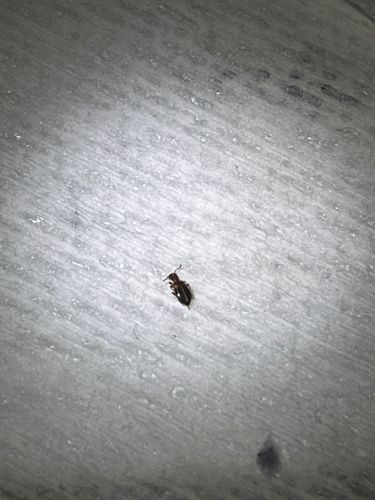Carpet Beetle
Scientific Name: There are several species of carpet beetles, common examples include Anthrenus verbasci (Varied Carpet Beetle), Attagenus unicolor (Black Carpet Beetle), and Trogoderma variabile (Warehouse Beetle). Without a closer view, specific identification is difficult.
Order & Family: Order: Coleoptera, Family: Dermestidae
Size: Adults typically range from 2mm to 5mm (0.08 to 0.2 inches) in length. Larvae can be slightly larger, up to 7mm (0.28 inches).

Natural Habitat
Indoors, carpet beetles are commonly found in homes, museums, and warehouses. They inhabit carpets, rugs, upholstered furniture, clothing, blankets, and stored food products. Outdoors, they can be found in bird nests, animal carcasses, and dried plant matter before making their way indoors.
Diet & Feeding
Larvae primarily feed on animal products like wool, fur, feathers, leather, dead insects, and dried pet food. They are also known to consume plant-based materials like cotton, linen, and synthetic fabrics if stained with animal products or oils. Adult carpet beetles feed on nectar and pollen from outdoor plants.
Behavior Patterns
Carpet beetles undergo complete metamorphosis, meaning they have a larval, pupal, and adult stage. Larvae are typically the destructive stage, feeding on natural fibers. Adults are winged and can fly, often found near windows as they are attracted to light. They are often found in secluded, undisturbed areas where food sources (like lint, hair, or dried animal products) accumulate. They are most active in warmer months.
Risks & Benefits
Potential risks include significant damage to natural fiber products like clothing, carpets, and upholstered furniture. They can also damage stored food products. Some people may experience skin irritation or allergic reactions due to contact with larval hairs. There are no known direct benefits to humans; however, as scavengers, they play a minor role in breaking down organic matter in nature.
Identified on: 8/16/2025